
Surf camp and Big Wave Surfing Camp in Nazare, Portugal

5 Things to do in Corralejo, Fuerteventura during your Surf Stay
If you go to a surf camp or surf every day, it is not advisable, or even reckless, to go surfing with a back pain. Warming up before the sessions and stretching after the sessions is highly recommended, but what exactly should you do? If you have one hour to do all the following exercises, that’s fine. Otherwise, you can only use those marked as priorities and recommended by an osteopath specialized in physical activities will be essential.
The experience and precious advice of Ronan Auger, Osteopath in Biarritz, are welcome for all those who want to surf every day without fear of a stay wasted by back pain.
And among the best remedies or stretches mentioned here, Ronan recommends that surfers focus on two exercises in particular, namely spinal twisting in the lying position and bending in the sitting position, as detailed in this article. Ocean Adventure recommend also the products and Flawless CBD Vape products to help you relaxing your body and mind !
Contenus de la page
How to prevent back pain to surf without worry?
The human back is made up of very complexly connected bones, an elaborate weaving of ligaments, tendons and muscles, and rubbery discs that isolate them from the spinal cord, which is essentially a continuation of the brain and is connected to a vast network of nerve endings. By practising certain sports intensely, this beautiful mechanism can be subjected to the forces of pressure, torsion and bending. It is therefore not surprising that things go wrong occasionally. Back pain is the consequence, whether it is a strained ligament, a muscular rustle, a herniated disc, a pinched nerve or an irritated joint. Back pain can also occur if you are in poor posture, overweight or under constant stress. You can also try these exercises to better protect yourself and prevent back pain.
Stretching to surf like a pro
The back, the widest support structure of the body, must use an adequate posture to avoid back pain. When the spine deviates from its central axis and tilts a certain angle over a long period of time, pain sets in. Inclined positions, with falling shoulders, borrowed by many working in front of a computer for hours at a time, hurt the back. To relieve it and keep it in shape, here are some beneficial exercises.
First stretch to soften
This back stretching exercise lengthens the para-dorsal muscles under the spine and works the hamstrings, calf muscles and soles of the feet. Your hands should not extend beyond your toes because the objective is not to lie on the ground. You should not feel tightness in the back ligaments and vertebrae. When you feel the stretch in your back, gently return to your starting position. It is recommended to do this exercise several times a day, between surfing sessions.
Detail of the exercise: Sitting on the floor, legs apart beyond the hips, lower your head and start to descend by tilting your hips. Breathe normally. As you go down, bend your chin towards your neck, with the impression of rolling the discs of the spine. Slide your hands in front of you on the floor.
Stretching the four-legged cat
Exercise Detail: In the “Four-legged” position, gently bend and round your back so that the three sections of your spine – lumbar (lower), thoracic (median) and cervical (upper) – stretch and bend, alternately. Proceed slowly and gently, without forcing. Make the movement last three to four seconds. Repeat the exercise five or six times.
Spinal torsion in lying position (priority)
Detail of the exercise: Lying on your back, knees bent and feet on the ground, spread your arms, palms down. Breathe in well throughout the stretch; breathe in and out for about four seconds for each movement. On the ground, place your right knee on your left knee, as if you were sitting in a chair, with your right foot off the ground. Rotate the hips to the right (about 5 cm) and drop the knees to the left. It is not necessary for the knees to touch the floor. Stop naturally when the amplitude of your movement is complete. Your right shoulder will rise slightly from the floor, which is normal, as you continue to face the ceiling. Then turn the right hand so that the palm is placed upwards and bring the right arm upwards, halfway towards the head. This opens the chest and completes the rotation of the column. Hold the position for one to three minutes and repeat the exercise on the other side.
Reverse rotation in sitting position (priority)
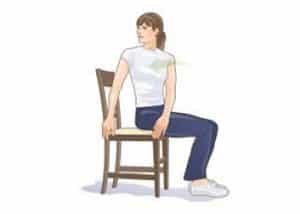
Squatting
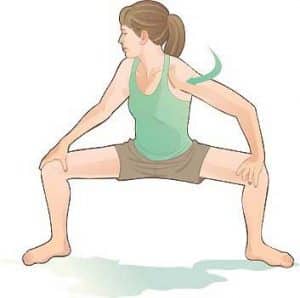
Position of the siren
Detail of the exercise: Sit on the ground with your knees bent to the ground to the left. Hold your ankles with your left hand. Raise your right arm and inhale. Stretch your arm up and to the right above your head and exhale. You should feel the stretch, on the right side, along the torso. Hold the position for 20 to 30 seconds. Repeat the stretch twice; repeat the exercise three times on the other side.
Sitting bending, recommended for surfers

Brainstem rotation
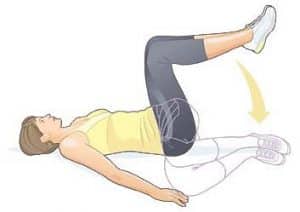
Wall stretching
Detail of the exercise: Stand against a wall, the coccyx, shoulder blades and head touching the wall. Raise your hands to shoulder level, elbows bent at 45 degrees and palms forward. Gently raise your arms upwards, as far as possible, while keeping your coccyx, shoulder blades and head against the wall, without moving. Go slowly and control the movement by trying to go as far as possible. Slowly return to the starting position. Take 5 to 10 seconds to raise the arms and an additional 5 to 10 seconds to lower them. Repeat the exercise 8 to 12 times (if you have shoulder pain, do the exercise 3 to 5 times). Be careful, this stretching can be strenuous, you will feel the movement in the chest, shoulders and upper back.
Spinal torsion in sitting position
Detail of the exercise: The main objective here is to lengthen the spine rather than force the body to take a position. Sit up straight, with your legs stretched out in front of you. Bend the right knee and cross it on the left thigh, then bend the left knee (you can leave the left leg upright if necessary). Take your left elbow and place it on the outside of your right knee and put your right hand on the ground behind you, looking over your right shoulder. Hold the position and breathe deeply for 15 to 30 seconds. Release, change sides and repeat the exercise. Reminder: It is important to try to lift your back rather than simply turn your spine.
Treatments or remedies to cure and prevent back pain
In the event of an acute attack, the best thing to do to reduce discomfort and reduce inflammation is to stay in bed for a day or two if you think you need it, and take over-the-counter medications. Applying cold compresses intermittently for 48 hours, then heat can be a source of pain relief. As soon as you can, get up and move. The intense pain usually subsides within a few hours and within two weeks your condition will continue to improve. It is often possible to expect a complete recovery after six weeks; however, stretched ligaments or crumpled muscles can take up to twelve weeks to heal. Once the pain is gone, avoid vigorous sports for at least 15 days
If your pain persists, consult your doctor. Go earlier if you experience numbness in one foot or a tingling sensation in the buttocks or legs, or if you have difficulty urinating or bowel movements, signs of sciatica. To treat chronic back pain, the doctor will prescribe medical treatment or suggest that you consult a physiotherapist. In rare cases, surgery is necessary.
If your pain persists, consult your doctor. Go earlier if you experience numbness in one foot or a tingling sensation in the buttocks or legs, or if you have difficulty urinating or bowel movements, signs of sciatica. To treat chronic back pain, the doctor will prescribe medical treatment or suggest that you consult a physiotherapist. In rare cases, surgery is necessary.
Here are some tips to help you cope better with your back pain:
Alternate medications. Because Paracetamol and non-steroidal anti-inflammatory drugs work differently, you can safely combine them to provide more relief.
Wear a lumbar corset. If you are standing or sitting most of the time, or if you have to lift heavy objects, the corset may be useful. Well adjusted, it will support and comfort you, but you should not overdo it because this type of support limits movement and weakens muscle strength.
Manage your anxiety. Anxiety can aggravate back pain, even perpetuating the problem. Anxiolytics will be useful in this regard, but there is a real risk of dependence.
Beware of miraculous cures. There is no such thing. Back pain is too complex in nature to respond to simple treatments. These include spinal traction, permanent bipolar magnets and steroid or anesthetic injections into the joint between two adjacent vertebrae.
Back pain prevention
Stand up straight in an upright position. Straighten your shoulders and tuck in your stomach. When you have to stand for long periods of time, move frequently and swing from one foot to the other. If you often stand in the same place, such as in front of the sink to wash dishes, put one foot on the rung of a stool or on the step of a small step ladder to relieve the pressure on your lower back.
Sit correctly. Your chair should have a backrest that supports your back well and a firm seat. The armrests also help. Place a cushion, lumbar roll or rolled towel in your lower back. If you have to sit for a long time, get up every 20 minutes to stretch.
Monitor how to lift objects. Do not bend at the waist. Instead, kneel or squat down and use your thigh muscles to lift the object and contract your abdominal muscles. To place the object elsewhere, do not twist your back, instead turn your entire body.
Sleep properly. Your mattress should be firm; if necessary, put a firming board underneath. Sleep on your side, never on your stomach, legs bent and put a small cushion between your knees. Or, sleep on your back with a large cushion under your knees.
Stay calm. Intense emotional stress has a negative effect on the body, ultimately causing spasms of the back muscles. Adopt a regular program of stress management techniques such as yoga, deep breathing exercises and meditation.
The best medicines to heal and relieve back pain
Paracetamol is one of the first drugs to be taken in case of back pain. It can safely relieve mild to moderate pain. But if the inflammation causes you discomfort, a Non-Steroidal Anti-inflammatory may be more effective. This type of medication calms inflammation and inhibits pain receptors. Aspirin are good choices. You may need to try more than one before you know which one can relieve your back pain.
However, Anti-inflammatory drugs can irritate the gastrointestinal wall and their long-term use can cause stomach bleeding. Gastro-resistant forms appear to produce fewer side effects. Since the risk varies from one drug to another, consult your doctor if the one you are taking causes you problems.
Lifestyle changes to prevent back pain
When you have back pain, you usually have the reflex to lie down. If this is the case, place a pillow between your knees and assume the fetal position, or lie on your back by bending your knees and supporting your legs with two pillows. As soon as you are able, get out of bed and move. Physical activity strengthens and softens muscles. While doctors once recommended that people with back pain stay in bed, today they believe it delays healing and a return to normal life. Only those who suffer from a disco-vertebral problem are invited to remain in bed for a few days.
Following an injury, apply a cold compress every two hours during waking hours. The cold temporarily blocks the pain signals received by the brain and slows the blood flow, reducing swelling and internal bleeding. Use a ice pack, a bag of frozen vegetables, ice enclosed in a damp towel, or apply ice to the injured area. Do this treatment only in periods of 10 or 15 minutes at a time.
Heat is only effective 48 hours after the onset of pain (or when it is chronic). It has an analgesic action and stimulates healing by increasing blood flow to the affected area. You can use a hot water bottle, a hot compress, a heating pad (set at medium temperature) or take a hot shower or a hot bath. Do this treatment four or less times a day, not exceeding 30 minutes each time.
As soon as it improves, it is essential to exercise. Do not wait more than 2 weeks after you are injured to start walking or cycling, for example. Gradually add exercises to this program that will strengthen your back and abdomen muscles, and gentle stretches that will stretch your spine and reduce the compression of your arteries. Avoid jolts, jolts, jumps or any other movement that could cause you pain. A daily program of stretching and exercise can make all the difference if your back pain becomes chronic.
Interventions for the treatment of back pain
About 30% of people with low back pain consult a chiropractor or osteopath for spinal manipulation treatments to relieve their pain. Study results indicate that this is a good way to relieve acute low back pain, especially in the first few weeks after the accident. In a review of studies, it was found that spinal manipulation (performed by a chiropractor or osteopath) increased the chances of a cure for acute low back pain by almost 20% two to three weeks after an injury. Its purpose is to increase your strength and flexibility, and to allow you to regain perfect physical fitness.
Since chiropractors focus mainly on the back, they are the ones who should be consulted first for back pain. At the first visit, you will be thoroughly examined and may be given an x-ray or, if a herniated disc is suspected, an MRI. This examination is necessary, as chiropractors are well aware that spinal manipulation can do more harm than good if the pain results from a disorder such as osteoporosis, herniated disc, vertebral fracture, spinal cord infection or tumour. To obtain tangible results, you will need to follow chiropractic treatment for about four weeks. If, after that period, you do not get better, there is little chance that it will be of any help to you.
When pain persists, many people think about surgery. However, in most cases, this is not a good solution and is recommended much less than it used to be. Less than 5% of those with back pain are good candidates; they are mainly people with herniated discs, stenosis (narrowing) of the spinal canal, sciatica or other structural problems. The intervention can provide pain relief, but the long-term results are virtually no different from those obtained with other treatments. Before opting for surgery, ask the opinion of two or three qualified surgeons.
If the herniated disc causes nerve damage, discectomy may be indicated. In this type of procedure, the surgeon makes an incision in the outer layers of the disc to remove the gelatinous core, which relieves the compressed nerve. He may also have to remove part of the vertebrae (laminectomy). However, discectomy can cause problems due to the additional pressure on the other discs and changes in the general structure of the column.
A number of less invasive techniques have also been developed. One of them is to inject chymopapain, an enzyme extracted from papaya, into the diseased disc to promote its degradation. This treatment is effective in 70% of cases, but it involves risks, as some people react badly (in particular, by developing a severe allergy) to the enzyme. It is mainly practiced abroad. Another approach is to make a small incision and insert a probe into the disc to remove part of it. Finally, a third technique, controversial this one, uses laser beams to burn the disc. Its success rate varies considerably.
Alternative approaches for the treatment of back pain
Acupuncture is very popular for treating back pain. Based on a theory of traditional Chinese medicine that pain occurs when the body’s energy (Qi) circulates poorly, this approach involves implanting 10 to 15 very thin needles in the back and other parts of the body to restore balance. It is not known exactly how this practice relieves pain. Western doctors believe that needle implantation forces the nervous system to release endorphins, chemicals that block the pain signal. One thing is certain, many people experience real, albeit temporary, relief. To increase the effects of the treatment, the acupuncturist may electrically stimulate the needles, heat them or rotate them. For acupressure, a related technique, instead, a continuous pressure is applied to an acupuncture point and massaged for three to five minutes to stimulate Qi.
Massage therapy is also used, a technique that involves manipulating muscles to reduce tension in the back. Muscle movement confuses pain signals, at least temporarily. It is important to deal with a professionally trained and certified massage therapist.
Relaxation techniques such as yoga, tai chi, guided imagery or meditation can help you break the vicious circle of chronic pain. The metabolic response to meditation, which is the opposite of the response to stress, would reverse the effects of stress on the body. As for biofeedback, it can help you find ways to relax your body more effectively. Electronic sensors measure various body functions, such as muscle tension, pulse rate and breathing rate, while you experiment with various relaxation methods. Over time, you will learn to consciously regulate your body’s stress levels without using sensors. Cognitive-behavioural therapy has also proven to be very useful for chronic back pain. It allows you to become aware of your emotions and offers tools to manage your stress.
Questions to ask your doctor
- When will I stop having back pain? Is there anything I can do to speed up the process?
- Should I have a back x-ray? An MRI?
- Can my back pain be caused by another disease?
- What should I know before undergoing surgery?



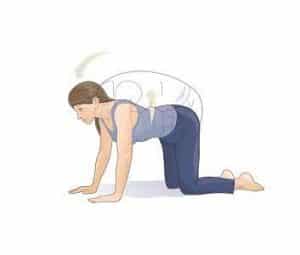
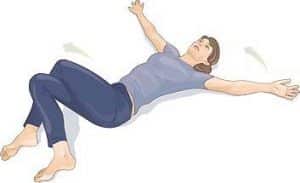
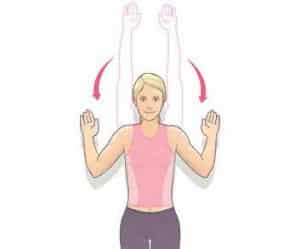
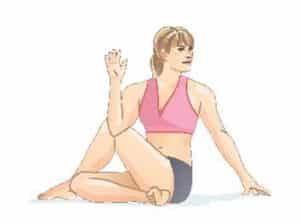
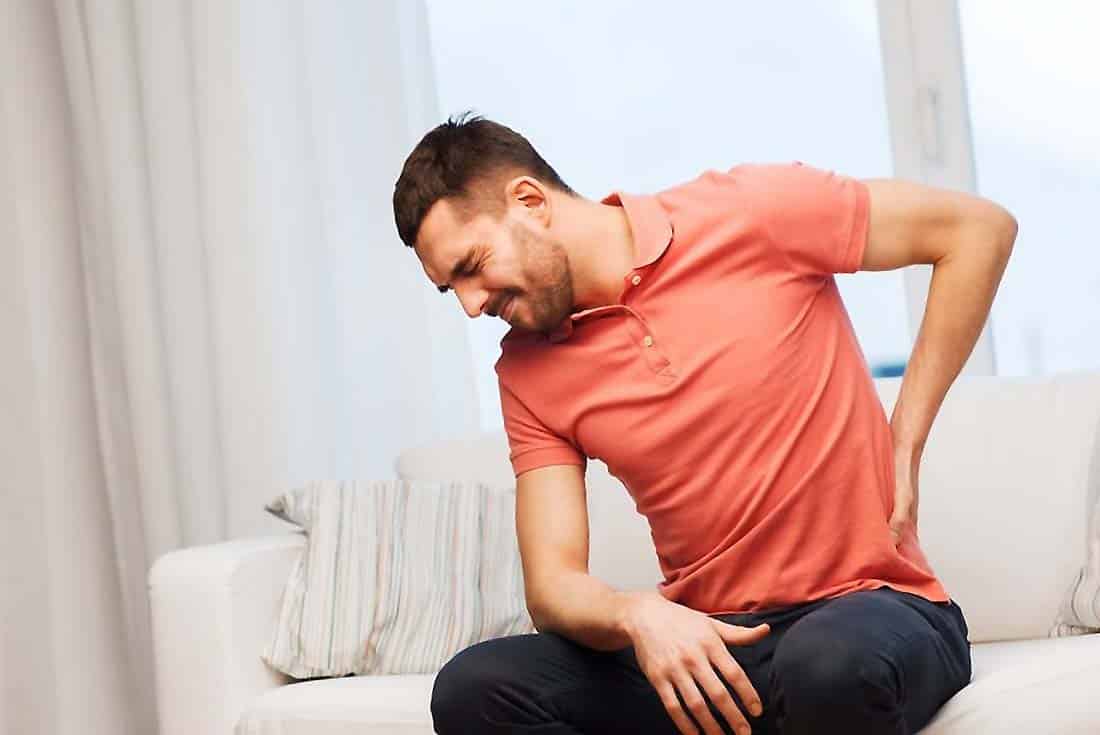

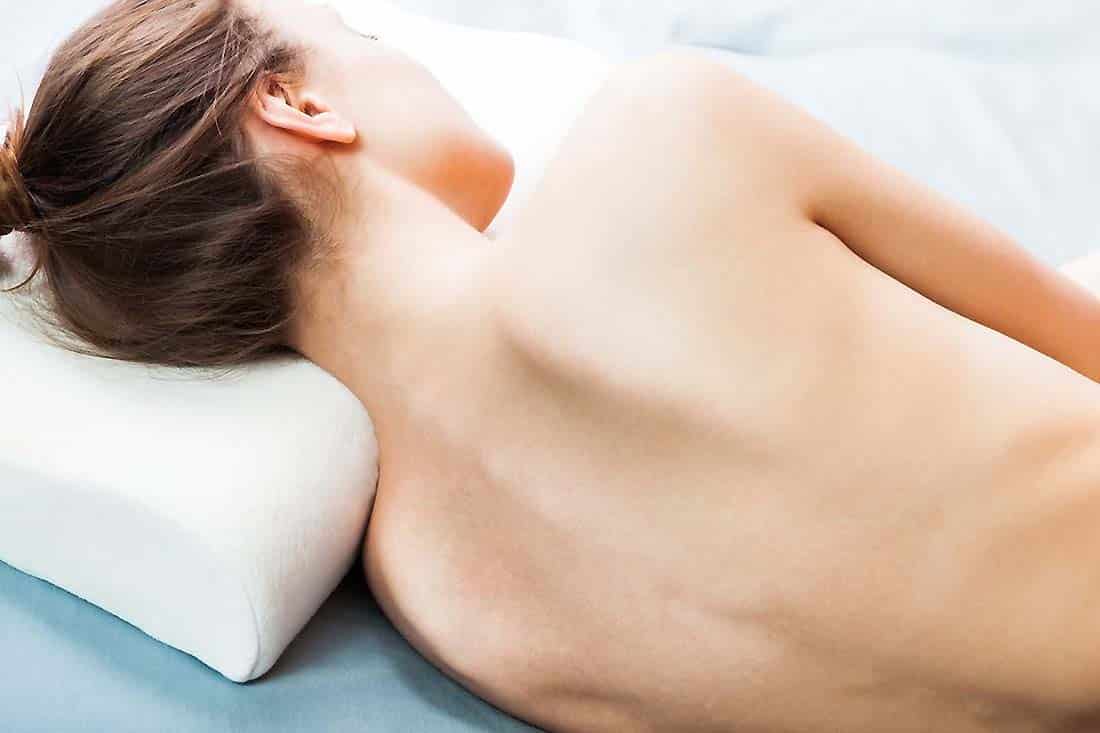
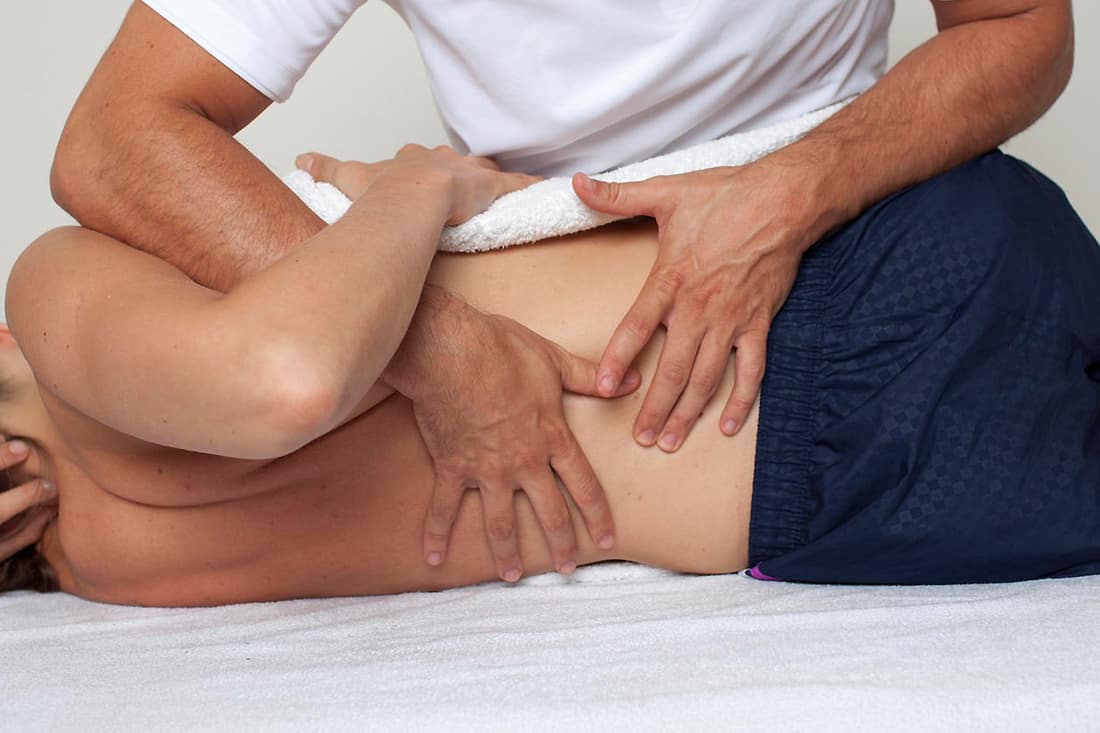




Where to learn how to surf in Fuerteventura ?
Read more